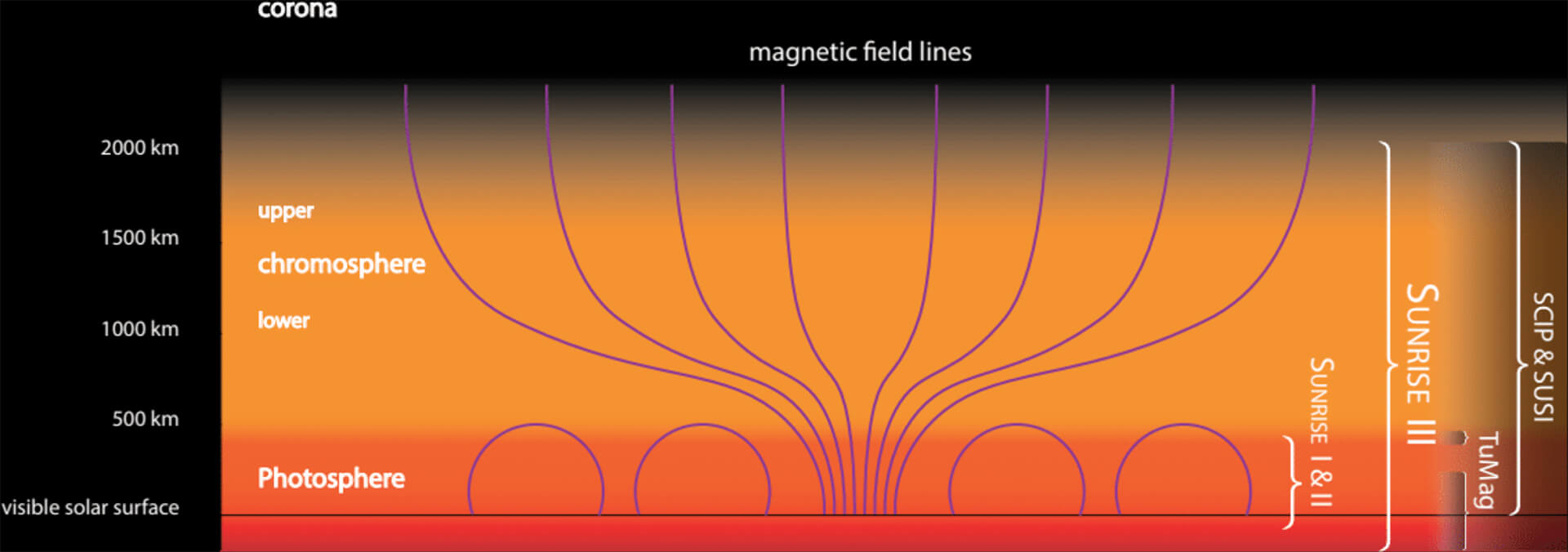

What is the SUNRISE Balloon Experiment?
Mission overview
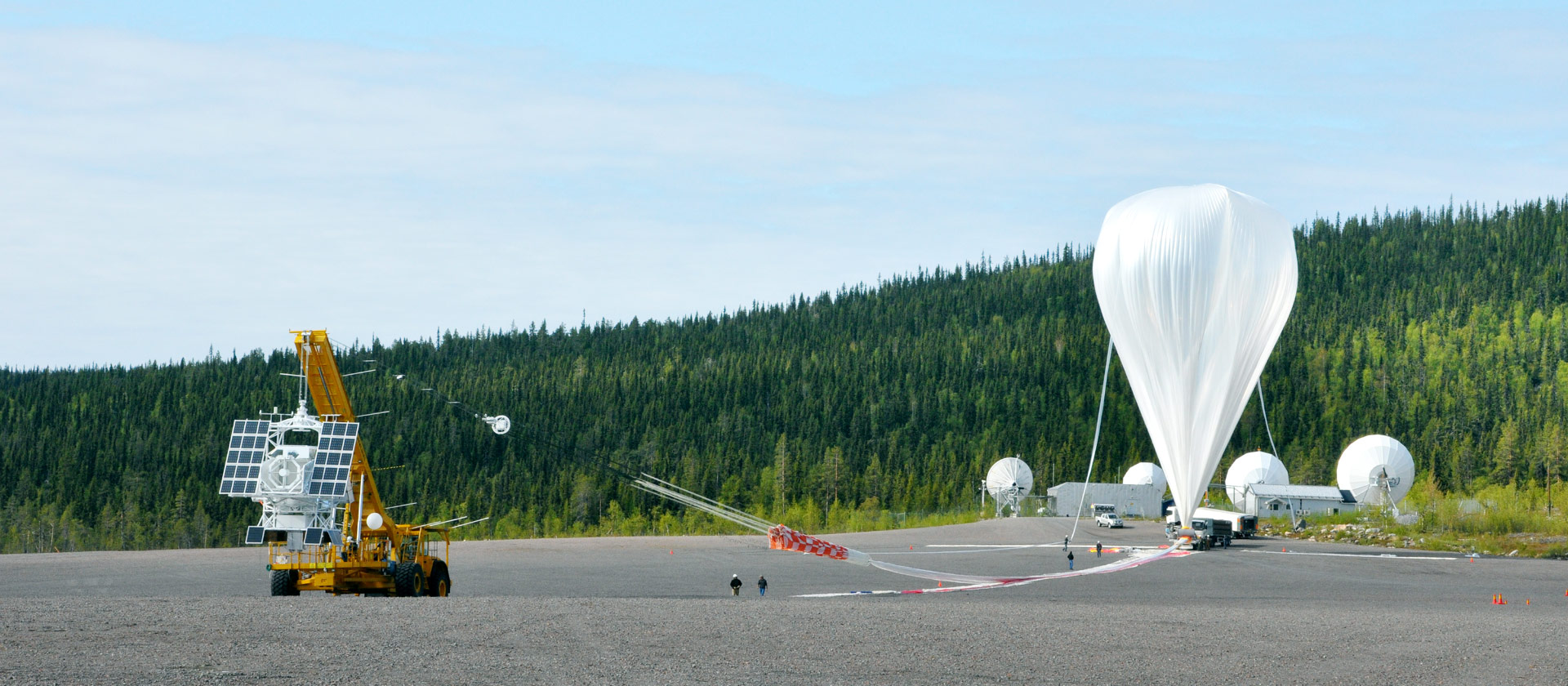
SUNRISE is an international balloon-borne observatory equipped with a 1-meter aperture telescope for observing the Sun. It is promoted mainly by Germany and Spain, and is being carried out through the long-duration balloon program of the United States/NASA. Two flight have been conducted so far, in 2009 and 2013, and many scientific results have been produced.
Characteristics of the SUNRISE mission
Solar observation from the sky
SUNRISE main characteristic is the ability to carry a large telescope up to the stratosphere and observe the Sun from there. It reaches an altitude of 35 km, corresponding to an environment similar to the outer space (more than 99% of the mass of the Earth's atmosphere is below this altitude).Therefore, light from celestial bodies can be observed directly without passing through most of the Earth's atmosphere. In contrast, when observing stars from the ground, the light from celestial bodies is refracted as it passes through the Earth's atmosphere, making it difficult to obtain clear images. In the stratosphere, where the Earth's atmosphere is almost nonexistent, extremely clear images can be captured.
Solar observations with a large aperture telescope
The aperture of SUNRISE (1 m) makes it the world's largest airborne solar telescope. While the observing satellite "Hinode" is the world's largest space solar telescope (with a 50 cm aperture), the aperture of SUNRISE is twice the size. With a larger aperture, and in proportion to its size, finer structures can be observed. Additionally, because light can be collected in proportion to the aperture area, high-precision observations are possible.
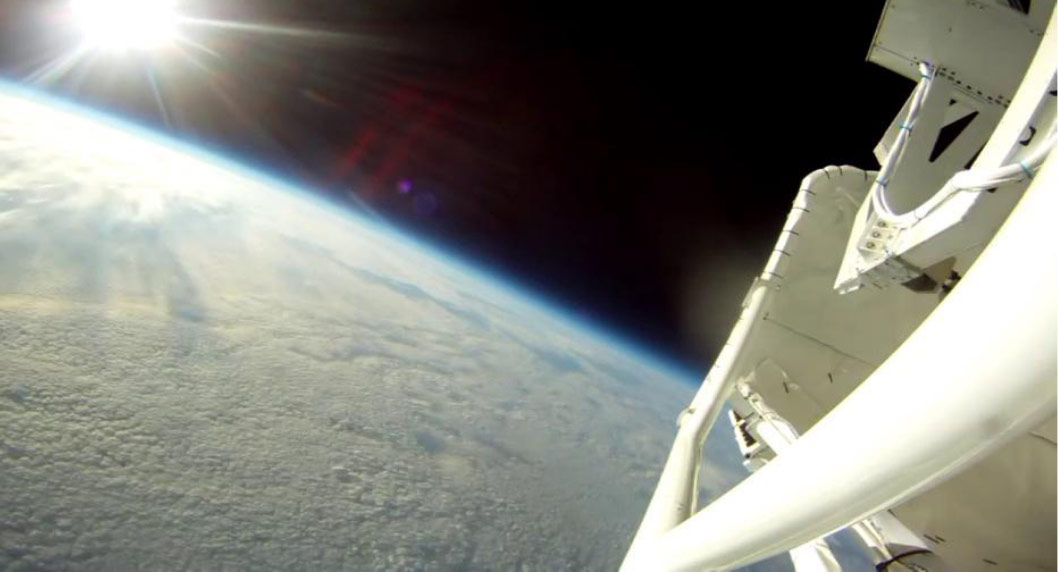
SUNRISE-3 instruments
In addition to the telescope, three main scientific instruments and two devices are located in the gondola of the balloon. How is the sunlight captured by the telescope observed?
-
■ ISLiD (Image Stabilization and Light Distribution System)The sunlight coming from the gondola is distributed to each device (SUSI, TuMAG, CWS, SCIP) for each wavelength. Developed by the Max Planck Institute in Germany.
-
■ SUSI (Sunrise Ultra-violet Spectropolarimeter and Imager)
-
Spectropolarimeter for ultraviolet light, developed by the Max Planck Instutue (MPS) in Germany. Most of the light in the observed wavelength range (309-417 nm) is absorbed by the Earth's atmosphere, making it difficult to observe from the ground.
-
■ TuMag (Tunable Magnetograph)
-
Visible light imaging polarization spectrometer. It has been developed by the Instituto de Astrofísica de Andalucía (IAA), Spain. Unlike other instruments, it uses an imaging method (simultaneous observation of two-dimensional space at a certain wavelength of light).
-
■ SCIP (SUNRISE Chromospheric Infrared spectroPolarimeter)
Polarization spectrometer for near-infrared light. It has been developed by Japan. -
■ CWS (Correlation tracker and Wavefront Sensor)
-
Monitors the vibration (image blur) of the telescope in real-time, allowing to compensate for it to obtain high-resolution images of the sun. This was developed by the Leibniz Institute for Solar Physics (KIS) in Germany.
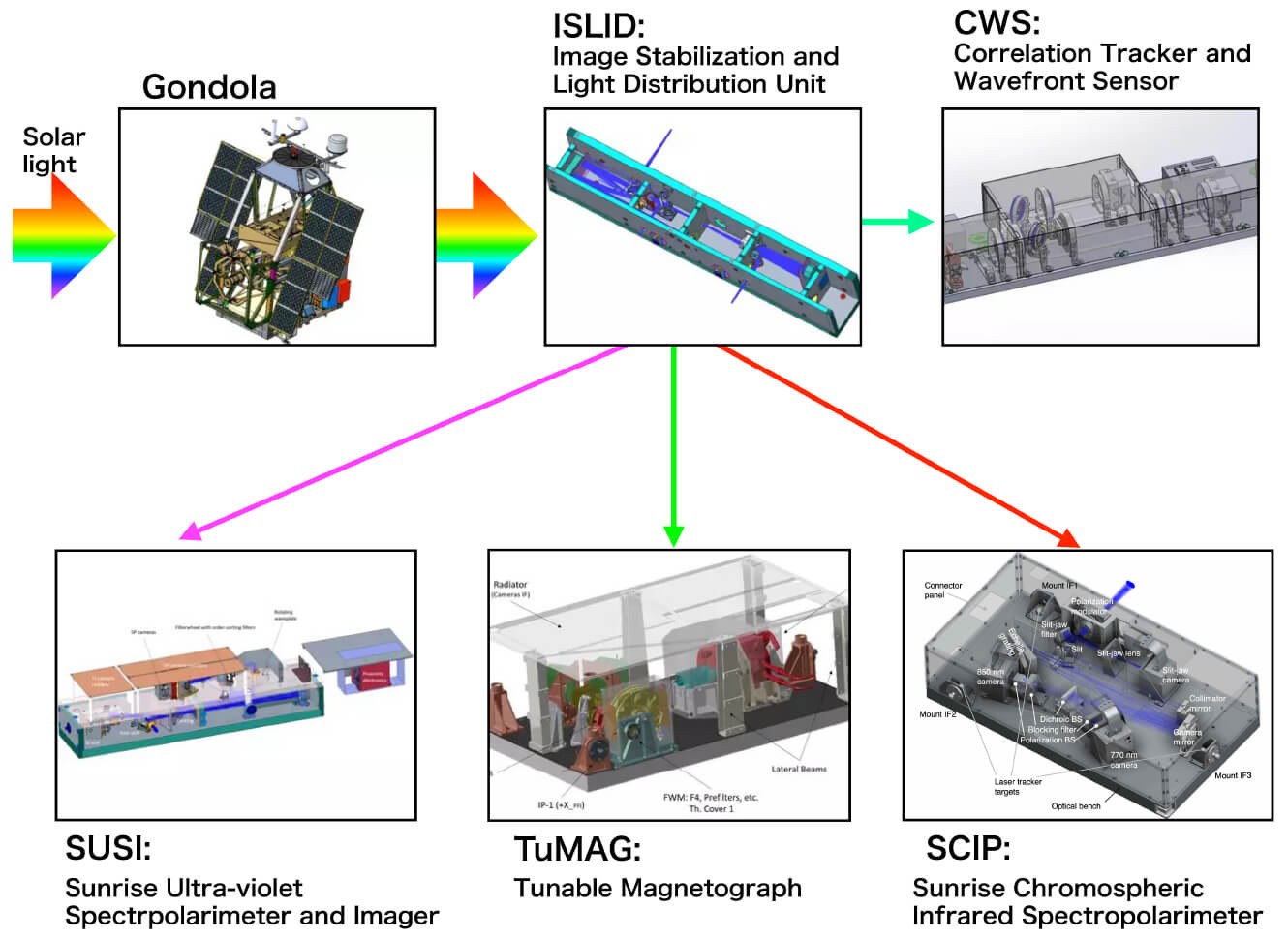
Flight Schedule
SUNRISE-3 will be launched from the Esrange Space Center (SSC) near Kiruna, in northern Sweden. It will cross the Atlantic Ocean and land in Canada. During the flight, with a duration of one week, solar observations will be carried out. The flight is planned for June 2022, a period when the sun does not set in the Arctic Circle (Sweden-Canada). The fact that the sun does not set and is always visible extends the time for solar observations. Which is specially advantageous for balloon missions such as SUNRISE that are limited to a one-week flight. It is estimated that SUNRISE-3 will be able to observe the sun for about one week. During this limited time frame, a variety of observations will be carried out. After landing in Canada, the acquired data and the instrument will be recovered.
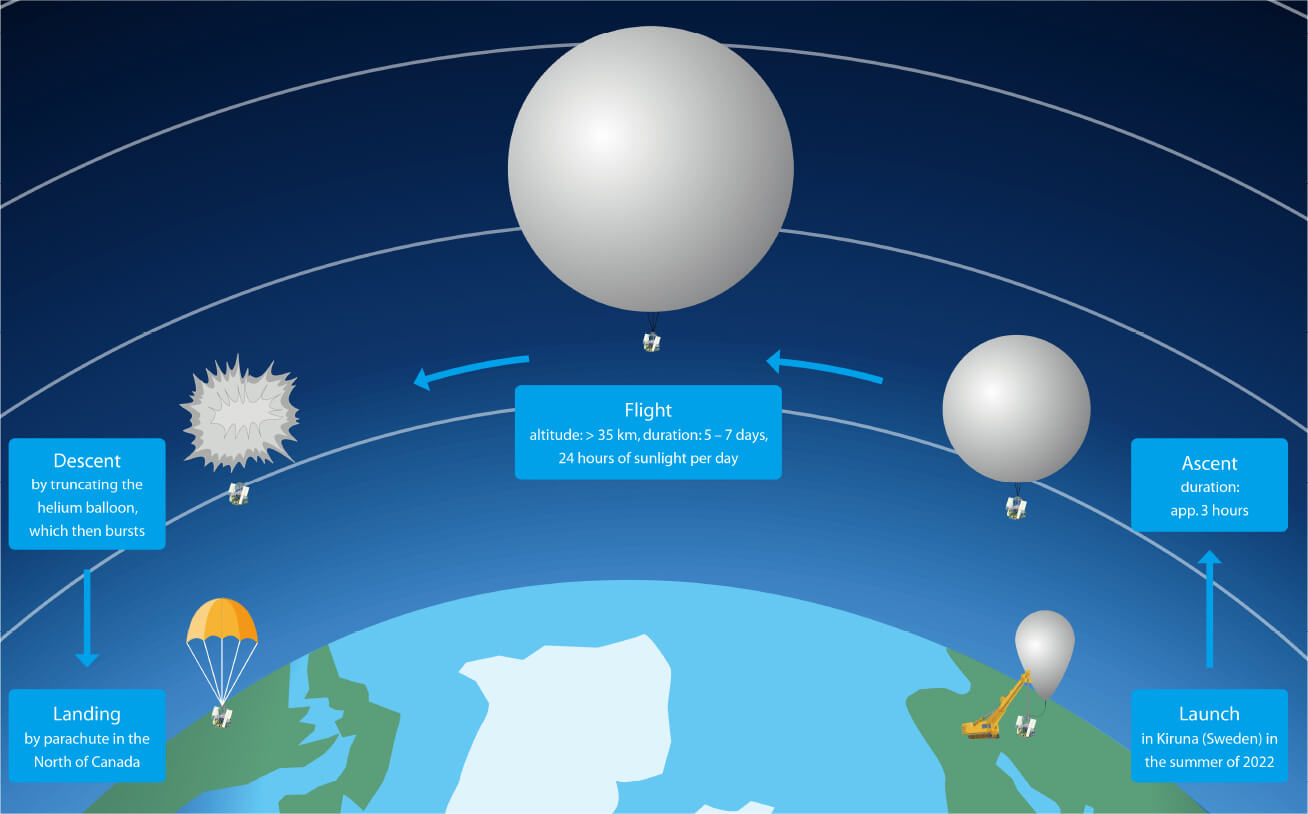
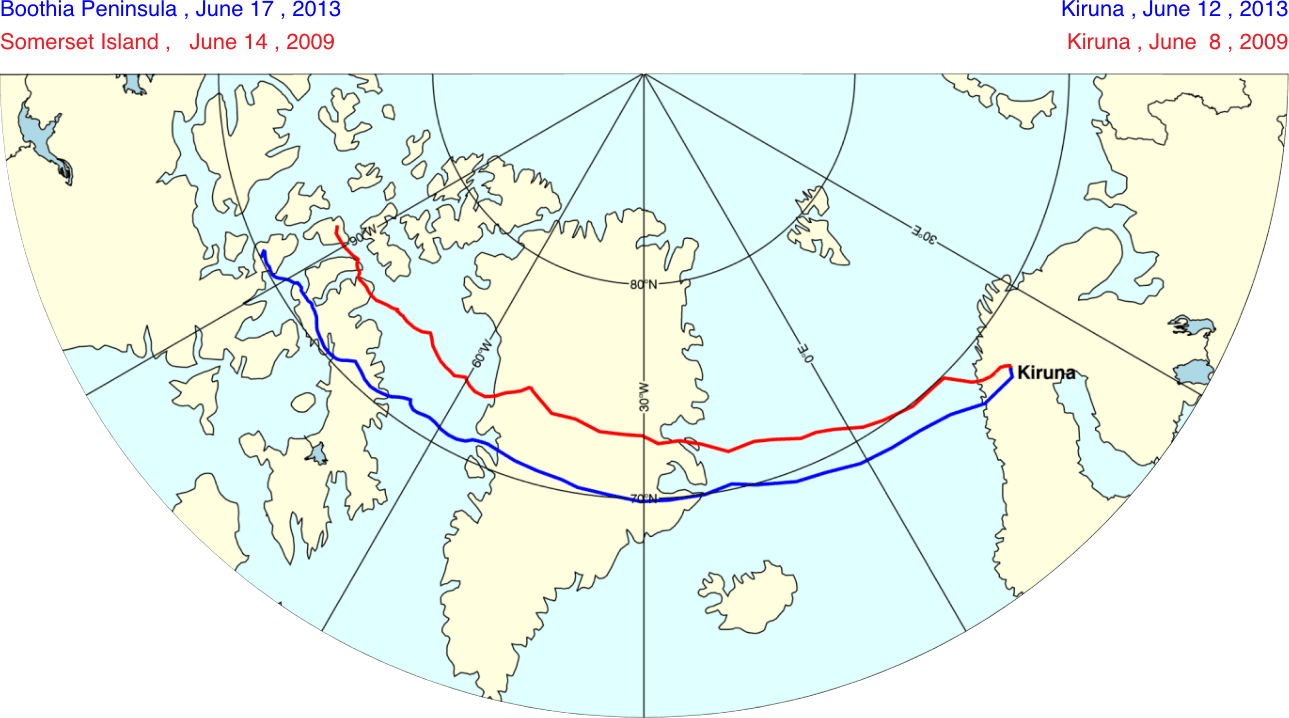
Advantages of balloon observations
Comparison with ground-based telescopes
Compared to ground-based, the major advantage of balloon observations is that they are not affected by the Earth's atmospheric fluctuation. Allowing for very clear astronomical images and the observation of light at wavelengths that do not reach the ground. For example, because ultraviolet radiation is largely absorbed by the Earth's atmosphere it is difficult to observe from the ground. Similarly, some of the near-infrared light perceived by SCIP cannot be measured on the ground, but can be captured with balloon observations.
Comparison with space telescopes
Balloon missions can reduce the cost in more than 1 to 2 orders of magnitude. They also have the ability to carry large and heavy instruments. In fact, SUNRISE-3 carry equipment weighing more than 2 tons (including the large aperture telescope and several observation instruments). Another advantage of balloon observations is that the instruemts can be recovered and reused. If they can be recovered, even large amounts of observation data do not need to be transmitted during the flight and can be read out directly later. Another advantage is the shorter development phase. This is because the impact during the release of the balloon is reduced, and the environmental conditions (temperature, etc.) during the flight are not as severe as those of a satellite. As a result, preparations can be completed in a shorter time frame.
New features of SUNRISE-3
The key point is the ability to seamlessly characterize physical quantities (temperature, velocity and magnetic field) from the solar surface (photosphere) to the upper atmosphere (chromosphere). Prior SUNRISE-1 and 2 balloons and the solar-observing satellite HINODE were not equipped with spectropolarimeters for observing the chromosphere. In SUNRISE-3, the previously developed instruments, the visible light imager (IMaX) and the ultraviolet imager (SuFI), have been significantly upgraded, and a new near-infrared polarization spectrometer have been installed. This will make it possible to perform polarimetric spectroscopic observations not only in the photosphere but also in the chromosphere, and to characterize the three-dimensional temperature, velocity, and magnetic field structure in the solar atmosphere.
